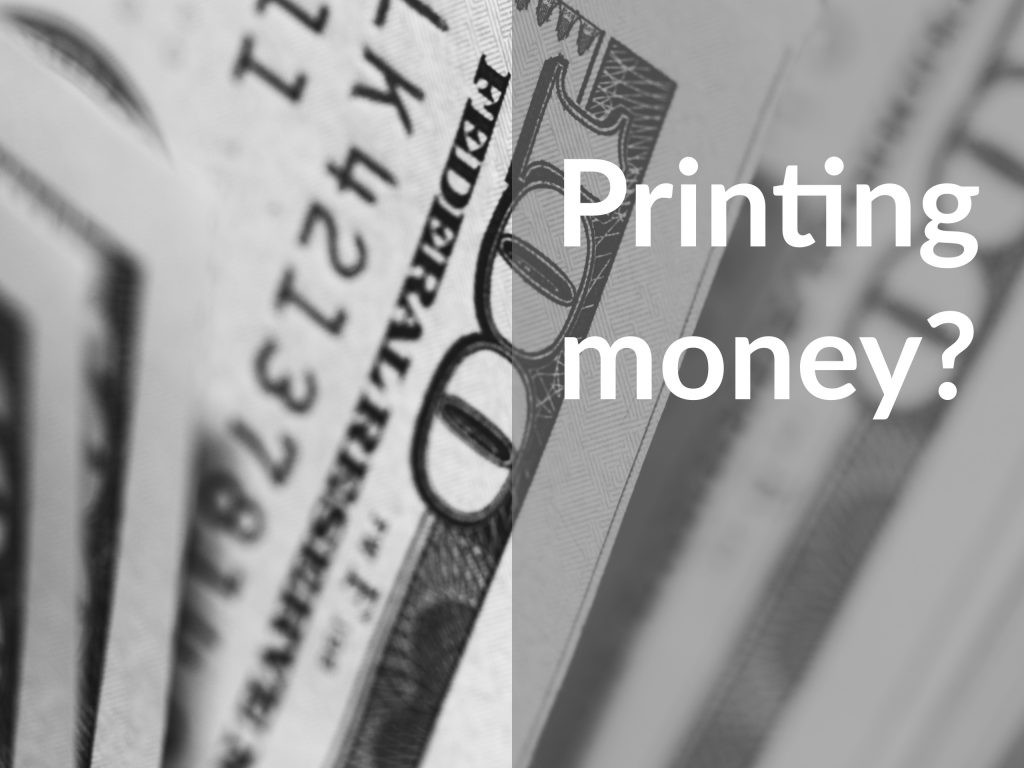If the Federal Reserve has printed over $2 trillion dollar and given it to banks to lend, why is U.S. inflation still low?
In this episode you’ll learn:
- How banks create money and how reserves factor into banks’ lending decisions.
- How much has the money supply increased as a result of bank lending and Federal Reserve action.
- How Federal Reserve bond buying increased liquidity but not national wealth.
- Why we haven’t seen higher inflation.
Show Notes
Sapiens: A Brief History of Humankind – Yuval Noah Harari
Balanced Asset Allocation: How To Profit In Any Economic Climate by Alex Shahidi
Is the Federal Reserve Printing Money? – Kimberly Amadeo the Balance
Does the Federal Reserve Print Money? – Federal Reserve Banks of St. Louis
Reserves Do NOT Allow Banks to Make More Loans – Cullen Roche – Pragmatic Capitalism
What Is Money? European Central Bank
Episode Sponsors
Episode Summary
Many people wonder if the Federal Reserve is really printing money. Varied schools of thought exist behind the value of money, how it gets injected into a country’s economy, and how it impacts the private sector. On this episode of Money For the Rest of Us David offers insights into this complex subject, all while giving you the best information regarding the Federal Reserve, its open market operations, bank reserves, and why we aren’t experiencing hyperinflation. It’s sure to be an educational episode that you don’t want to miss.
Can the Federal Reserve create money without printing it?
The US Federal Reserve is not able to produce physical money in the form of coins or bills. That’s the responsibility of the US Treasury, their Bureau of Engraving and Printing, and the US Mint. The Federal Reserve, however, can “print money” when it purchases U.S. Treasury bonds with money it creates by adding to its member bank reserves.
Kimberly Amadeo, a writer at The Balance, explains this buying/selling of US treasuries by saying, “One of the Fed’s tools is open market operations. The Fed buys Treasuries and other securities from banks and replaces them with credit. All central banks have this unique ability to create credit out of thin air. That’s just like printing money.”
How do banks create money for individual borrowers?
Contrary to what many believe may happen, banks do not transfer money from a different account or withdraw it from a central vault for loans. Rather, David explains that banks “create money out of nothing” and withdraw it when loans are repaid. Thus, excess central bank reserves are not a necessary precondition for a bank to grant credit and therefore create money. Banks typically only have to have 10% of all accounts in reserves. If a bank lacks the reserves to cover the payments, it can be borrowed from an inter-bank market or central bank system.
Why haven’t we seen hyperinflation due to these processes?
The United States hasn’t seen an influx of hyperinflation because the private sector hasn’t been willing to borrow enough funds to strain the current capacity of the economic machine. David further explains the lack of inflation by using the two money aggregates that exist in the US:
Episode Chronology
[1:15] Is the Federal Reserve really printing money?[6:40] Two ways to address this question
[11:50] So how do individual banks create money for borrowers?
[21:20] Monetary aggregates in the US and how they indicate the level of wealth and liquidity
[23:50] Why hasn’t this led to hyperinflation?
Related Episodes
How Money Is Created and Destroyed
Will Infinite Money Save the Economy?

